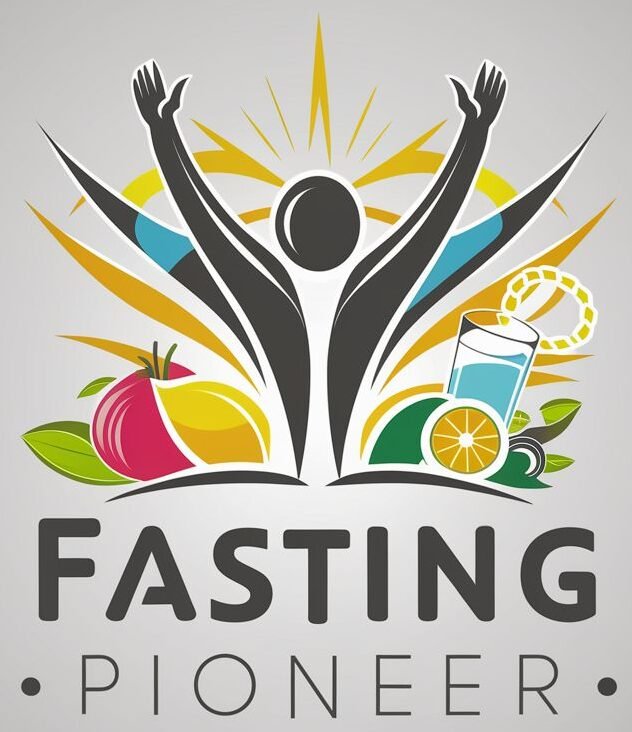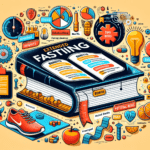So you’ve heard about extended fasting and you’re intrigued by the potential health benefits and weight loss results it promises. But where do you begin? In this article, we’ll provide you with a comprehensive beginner’s guide to extended fasting, giving you all the essential information you need to know before embarking on this transformative journey. From understanding what extended fasting is and how it differs from intermittent fasting, to learning about its potential benefits, tips for a successful fast, and common mistakes to avoid, this guide will equip you with the knowledge to navigate your way through an extended fasting experience with confidence and ease.
What is Extended Fasting?
Definition
Extended fasting, also known as prolonged fasting or long-term fasting, is a dietary practice that involves abstaining from food consumption for an extended period of time, typically ranging from 24 hours to several days or even weeks. Unlike intermittent fasting, which involves regular periods of fasting and feeding, extended fasting focuses on longer periods of restriction in order to reap a variety of health benefits.
Benefits
Extended fasting has gained popularity for its potential health benefits. Research suggests that this practice can aid in weight loss, improve insulin sensitivity, promote autophagy (the body’s natural process of cellular repair), boost brain function, reduce inflammation, and even extend lifespan.
During extended fasting, the body undergoes a metabolic shift by depleting its glycogen stores, leading to the breakdown of fat for energy. This allows for weight loss and a reduction in body fat percentage. Additionally, extended fasting promotes the production of ketones, which are molecules produced by the liver when the body enters a state of ketosis. Ketones can provide a sustainable energy source for the brain, potentially improving cognitive function.
Different Types of Extended Fasting
There are several methods of extended fasting, each varying in duration and intensity. One common approach is the 24-hour fast, where an individual goes without food for a full day. Another method is the 48-hour fast, which involves abstaining from food for two consecutive days. Going beyond this, there are longer-term fasts, such as the 5-day, 7-day, or even 21-day fast, where individuals refrain from consuming any calories for the specified duration. It is important to note that longer fasts should only be attempted under the guidance of a healthcare professional.
Preparing for Extended Fasting
Consultation with a Healthcare Provider
Before embarking on an extended fasting journey, it is crucial to consult with a healthcare provider. They can assess your overall health, identify any potential risks or complications, and provide personalized guidance. This step is particularly important if you have any underlying health conditions or take medications that may be affected by fasting.
Gradually Reducing Food Intake
In the days leading up to an extended fast, it is recommended to gradually reduce your food intake. This can help ease your body into the fasting state and minimize potential gastrointestinal discomfort. Start by reducing portion sizes and eliminating snacks between meals. Focus on consuming nutrient-dense foods to ensure you are providing your body with the necessary vitamins and minerals.
Hydration
Staying hydrated is essential during extended fasting periods. Drink plenty of water throughout the day to prevent dehydration and support the body’s metabolic processes. It is important to note that water is the only acceptable fluid during a fast, as other beverages may break your fast or hinder the desired effects.
Electrolyte Balance
Maintaining proper electrolyte balance is crucial during extended fasting, especially as the body excretes electrolytes through urine and sweat. To ensure optimal electrolyte levels, consider supplementing with sodium, potassium, and magnesium. These minerals can be obtained through electrolyte powders or natural sources like Himalayan salt for sodium, avocados for potassium, and leafy green vegetables for magnesium.
Understanding the Fasting Period
Duration of Extended Fasting
The duration of extended fasting can vary depending on the individual’s goals and health condition. Some opt for shorter fasts of 24 to 48 hours, while others may explore longer fasts ranging from 72 hours to several weeks. It is important to listen to your body and consult with a healthcare provider to ensure you choose a duration that is safe and suitable for your specific circumstances.
Entering Ketosis
One of the primary goals of extended fasting is to achieve a state of ketosis, where the body transitions from using glucose as its primary fuel source to utilizing stored fat for energy. Ketosis typically occurs after 12 to 24 hours of fasting, although the timeframe may vary among individuals. While in ketosis, the body produces ketone bodies, which provide a consistent source of energy, especially for the brain.
Metabolic Changes
During extended fasting, the body undergoes various metabolic changes. Initially, glycogen stores are depleted, leading to a decrease in blood sugar levels and a metabolic shift towards fat burning. This transition can result in weight loss, improved insulin sensitivity, and increased fat oxidation. Additionally, extended fasting activates autophagy, a process where damaged cells are recycled and cleared from the body, promoting cellular rejuvenation and overall health.
Managing Hunger and Cravings
Mindset and Motivation
Extended fasting can challenge your mental fortitude, especially during periods of hunger and cravings. To overcome these obstacles, it is important to cultivate a positive mindset and stay motivated. Remind yourself of the reasons why you chose to embark on this journey, such as improved health or weight loss goals. Engage in activities that distract you from food thoughts, and surround yourself with a supportive community that can provide encouragement and guidance.
Appetite Suppressants
If hunger becomes overwhelming during extended fasting, there are natural appetite suppressants that may help. Drinking herbal teas such as peppermint or chamomile can provide a temporary feeling of satisfaction and curb cravings. Additionally, consuming small amounts of calorie-free beverages like black coffee or green tea can help suppress appetite while providing a slight energy boost.
Drinking Enough Water
Staying properly hydrated is crucial to managing hunger and cravings during extended fasting. Drinking an adequate amount of water can help promote a feeling of fullness and alleviate hunger pangs. Aim to drink at least 8 cups (64 ounces) of water daily, but be mindful not to overhydrate, as excessive water intake can lead to electrolyte imbalances.
Distracting Activities
When hunger or cravings strike, distracting activities can be a useful tool to redirect your attention. Engage in hobbies, read a book, take a walk, meditate, or practice yoga to shift your focus away from food. Keeping yourself occupied can help alleviate the psychological aspect of hunger and make the fasting period more manageable.
Supplements and Medications
Consulting with a Healthcare Provider
Before introducing any supplements or making changes to your medication regimen during an extended fast, consult with a healthcare provider. They can evaluate your specific needs and advise whether supplementation is necessary or if adjustments to medication doses are required.
Recommended Supplements
While extended fasting can provide numerous health benefits, it is important to ensure that your body receives essential nutrients. During fasting periods, certain supplements can help support overall health. These may include a multivitamin to address any potential nutrient deficiencies, omega-3 fatty acids for brain and heart health, and vitamin D for immune function. However, the specific supplementation needs can vary depending on individual circumstances, so consulting with a healthcare provider is essential.
Impact on Medication
If you take medications on a regular basis, it is important to discuss their compatibility with extended fasting. Certain medications may need to be adjusted to accommodate the fasting state. Your healthcare provider can guide you on when and how to take your medications to ensure their effectiveness and safety during the fasting period.
Breaking the Fast
Importance of Reintroducing Food Gradually
Breaking an extended fast properly is crucial to prevent discomfort and digestive issues. After an extended fasting period, the digestive system may have slowed down, and abruptly introducing a large meal can potentially lead to bloating, cramping, or diarrhea. To avoid these issues, it is recommended to reintroduce food gradually. Start with light, easily digestible foods such as broth, fermented vegetables, or small portions of fruits and vegetables. Slowly increase the complexity and quantity of meals over a few days to allow your body to readjust to regular eating.
Eating Nutrient-dense Foods
When breaking an extended fast, it is important to prioritize nutrient-dense foods to replenish your body’s stores. Include a variety of whole foods such as lean proteins, fruits, vegetables, whole grains, and healthy fats. These foods provide essential vitamins, minerals, and macronutrients needed for optimal health. Avoid processed and high-sugar foods, as they can cause rapid blood sugar spikes and may undo the benefits gained from the fast.
Avoiding Overeating
After an extended fast, it is common to experience an increased appetite. However, it is important to avoid overeating and maintain portion control. Listen to your body’s hunger cues and eat until you feel satisfied, rather than stuffed. Focus on consuming nutrient-dense foods that nourish your body, and avoid mindless eating or emotional eating triggers.
Monitoring Body’s Response
As you break your fast and reintroduce food, pay close attention to your body’s response. Note any discomfort, changes in digestion, or adverse reactions to certain foods. Keep a food journal to track what you eat and how your body reacts, allowing you to identify any potential sensitivities or intolerances. If you experience persistent or severe symptoms, consult with a healthcare provider for further evaluation.
Potential Risks and Precautions
Underlying Health Conditions
While extended fasting can be beneficial for many individuals, it is important to note that it may not be suitable for everyone, especially those with underlying health conditions. Certain medical conditions such as diabetes, hypoglycemia, and eating disorders require careful consideration and monitoring during fasting. Consult with a healthcare provider to assess the appropriateness and safety of extended fasting based on your specific health needs.
Maintaining Physical Activity
During extended fasting periods, it is important to listen to your body when it comes to physical activity. While light to moderate exercise can be beneficial and aid in weight loss, intense or prolonged workouts may be challenging without sufficient energy from food intake. If you feel weak or fatigued, it is important to prioritize rest and adjust your activity level accordingly. Always put your safety and well-being first.
Seeking Medical Assistance if Needed
If you experience severe symptoms or adverse reactions during an extended fast, it is crucial to seek medical assistance promptly. These symptoms may include dizziness, severe weakness, rapid heartbeat, fainting, or any other concerning signs. A healthcare professional can evaluate your condition, provide appropriate guidance, and ensure your safety during the fasting period.
Tracking Progress and Results
Using a Fasting App or Journal
Keeping track of your fasting journey can provide valuable insights into your progress and results. Utilize a fasting app or maintain a fasting journal to record the duration and type of fasts, as well as any observations or reflections you have along the way. This documentation can help you track patterns, identify what works best for your body, and serve as a source of motivation and accountability.
Monitoring Weight Loss
Weight loss is often a desired outcome of extended fasting. While it can be a motivating factor, it is important to approach it with a balanced perspective. Use a reliable scale to monitor your weight periodically, but also pay attention to changes in body composition, such as inches lost or changes in clothing size. Remember that sustainable weight loss involves long-term lifestyle changes beyond the fasting period.
Noting Changes in Energy Levels and Mood
Extended fasting can affect your energy levels and mood, at least in the short term. It is common to experience fluctuations in energy and occasional low moods during fasting. However, many individuals report increased mental clarity and improved mood once the body adapts to the fasting state. Note any changes or improvements in your energy levels and mood throughout your fasting journey to gain a better understanding of how your body responds to extended fasting.
Long-Term Fasting Strategies
Intermittent Fasting
Once you have gained experience with extended fasting, you may consider incorporating intermittent fasting into your regular routine. Intermittent fasting involves cycling between periods of eating and fasting. Popular methods include the 16/8 method, where you fast for 16 hours daily and eat during an 8-hour window, or the 5:2 method, which involves eating normally for five days and restricting calorie intake for two non-consecutive days.
Alternate-Day Fasting
For those looking for a more structured fasting schedule, alternate-day fasting may be an option. This approach involves fasting every other day, with periods of unrestricted eating on non-fast days. Alternate-day fasting has been shown to promote weight loss and improve markers of health, but consistency and adherence are key.
Time-Restricted Eating
Time-restricted eating is another form of intermittent fasting that restricts eating to a specific window of time each day. The most common approach is the 12-hour fasting window, where you consume all of your meals and snacks within a 12-hour timeframe, such as 7 a.m. to 7 p.m. This method can help regulate hunger cues and enhance metabolic function.
Conclusion
Embarking on an extended fasting journey can be a transformative experience for both your physical and mental well-being. By understanding the benefits, preparing your body, managing hunger and cravings, and implementing appropriate strategies, you can make the most of your fasting period. Remember to consult with a healthcare provider throughout your journey, track your progress, and listen to your body’s cues. With patience and determination, extended fasting can become a valuable tool in your pursuit of optimal health and well-being. Reflect on your personal experiences, adjust your fasting goals accordingly, and continue to prioritize your long-term health.



